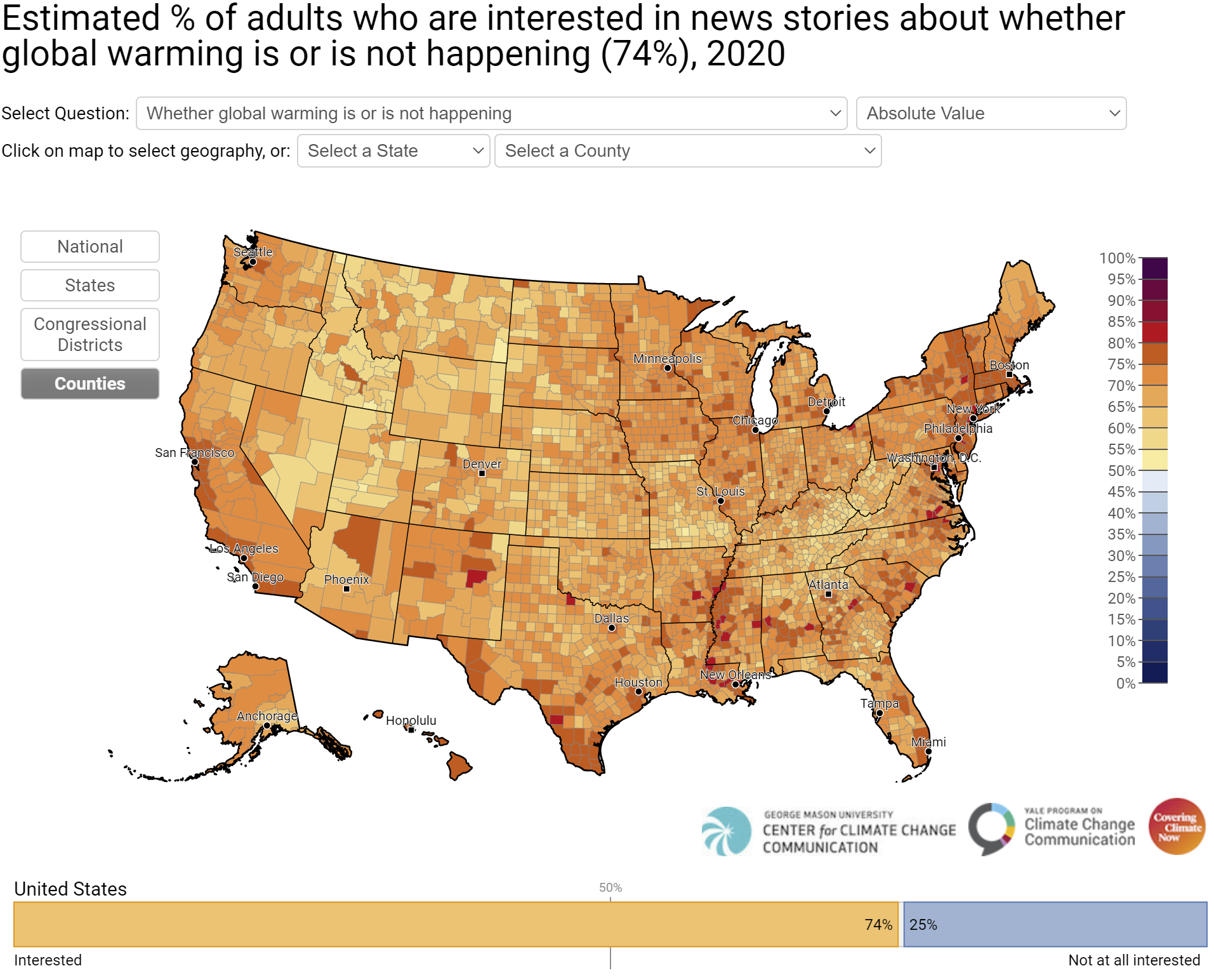RESEARCH | RESOURCES | EXPERTS TO INTERVIEW
Written by:
Ed Maibach
Principal Investigator, National Science Foundation Climate Matters grants
Director, Center for Climate Change Communication George Mason University
Most Americans have long accepted the reality of climate change, but they mistakenly saw it as a distant problem—in time (2050 or 2100, but not today), in space (Bangladesh, but not Boston, or my town), and in species (polar bears, but not people). The reality of global climate change, as made clear in the 4th National Climate Assessment, is that it’s causing a variety of harmful impacts in every region of America.
Over the past five or so years, there has been a major increase in the number of Americans who have come to understand that climate change is already harming Americans, and who have come to see themselves, their family members, and people in their community as being at risk for being harmed by climate change. For the first time, it would be fair to say that the average American has come to see climate change as a “here, now, us” problem. Therefore, not surprisingly, Americans are more worried about climate change than ever before.
An audience segmentation analysis called Global Warming’s Six Americas has shown that, over the past five years, the number of “Alarmed” Americans has doubled, while the number of “Doubtful” and “Dismissive” Americans have decreased. The notion that America is a nation divided about global warming might be true of elected representatives on Capitol Hill, but it is not true of the public at large--because about 8 out of 10 members of the public accept the reality of climate change, or are inclined to accept it.
Surprising to many people in the news business, only about half of Americans say they see stories about climate change in the media once per month or more frequently, and only about one quarter of American say they see climate stories in the media once per week or more often. Also surprising to many is how many Americans say they are interested in reading or watching various types of news stories about climate change, especially about its local impacts and about climate solutions; only about 2 out of 10 American adults say they aren’t interested in climate stories.
There are differences from community to community in people’s views about climate change, but the differences are not as large as many people assume. The Yale Climate Opinion Maps are a useful resource for journalists to understand the climate views of people in their community.
Explore the research here:
Experts
Ed Maibach
Director, Center for Climate Change Communication, George Mason University
emaibach@gmu.eduAnthony Leiserowitz
Senior Research Scientist and Director of the Yale Program on Climate Change Communication
anthony.leiserowitz@yale.edu
Resources for Climate Reporting:
Partnerships Journalism
Climate collaborations
Journalism collaborations are becoming more common, and research by the Center for Cooperative Media has shown that climate collaborations are particularly popular. Through its Partnerships Journalism program, Climate Central's journalists collaborate with local newsrooms to produce compelling features and they collaborate with scientists to obtain new data for stories — to learn more email editor John Upton, jupton@climatecentral.org.
